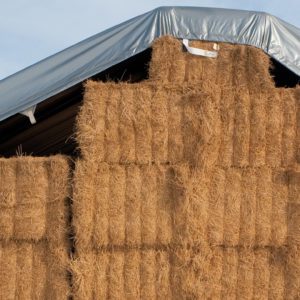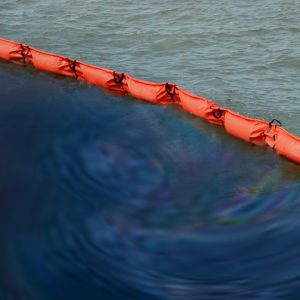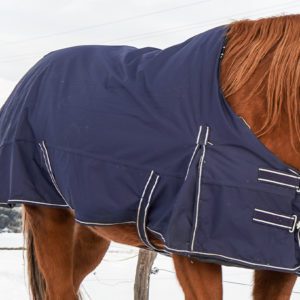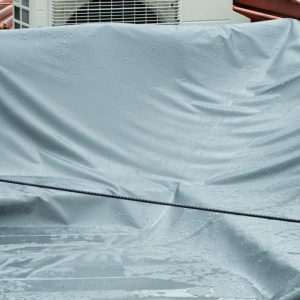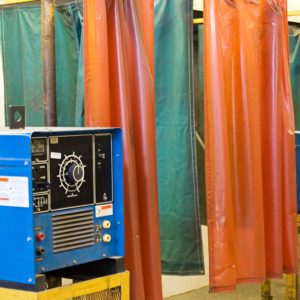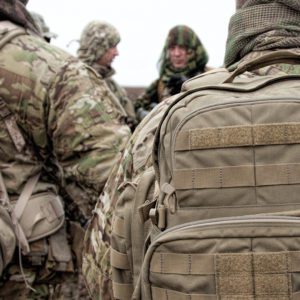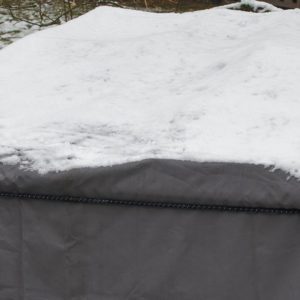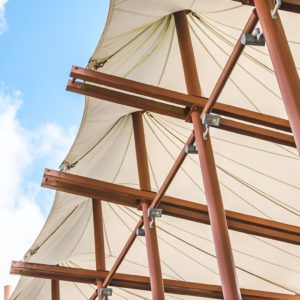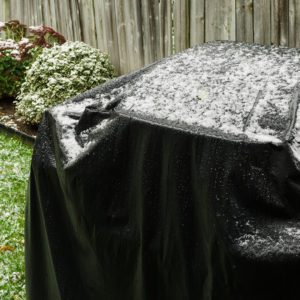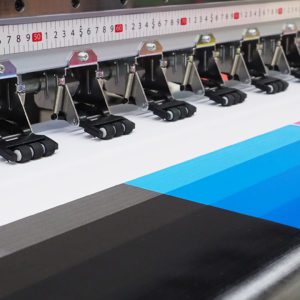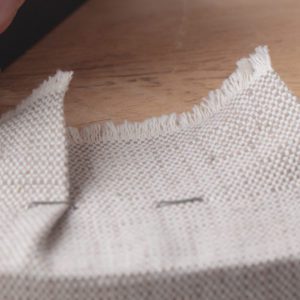Overview
Ripstop fabric is a versatile and highly durable material used across a wide range of industries. Ripstop fabric’s unique construction, which integrates thicker threads into the weave, provides excellent resistance to tearing while maintaining a lightweight profile. Whether made from a synthetic or natural fiber, ripstop fabric offers a balance of strength, durability, and comfort, making it great for outdoor, military, medical, and other rugged end uses.
Ripstop fabric is known for its classic grid pattern, ready to stop a rip in its tracks. This fabric is engineered to prevent small rips from spreading, by integrating thicker threads interwoven at regular intervals in a crosshatch pattern. The reinforcing threads can be made from different materials, including nylon, polyester, and aramids such as Kevlar and Dyneema, carbon fiber, and even cotton. The main body of the fabric can be made from the same material as the reinforcing threads or a different one, depending on the desired properties of the final product.
Ripstop fabric was initially designed for military parachutes during World War II. The grid pattern that makes ripstop so tear-resistant was crucial for ensuring that small rips in parachutes wouldn’t turn into catastrophic failures during a jump, helping to save lives and improve the reliability of airborne operations.
Top 4 Characteristics of Ripstop Fabric
- Tear Resistant: The most defining feature of ripstop fabric is its ability to resist tearing. The grid of thicker threads reinforces the fabric, preventing small rips from growing larger. Ripstop fabric is actually more tear resistant without any coating.
- Lightweight: Despite its strength, ripstop fabric remains lightweight, making it ideal for applications where weight is a concern, such as in tents, parachutes, and lightweight jackets. Heavier weight ripstops can be produced
- Durable: Ripstop is known for its long-lasting performance, withstanding wear and tear in demanding conditions, making it suitable for both outdoor and industrial uses.
- Versatile: Ripstop fabric is used in a wide range of products, from military uniforms and parachutes
to everyday items like backpacks, jackets, and kites, due to its combination of lightweight durability and tear resistance.
Can Ripstop Fabrics be Coated?
Most synthetic ripstop fabrics are treated with DWR, adding to their versatility in various environments. Polyester ripstop, in particular, offers good resistance to UV rays, making it a preferred choice for outdoor applications where prolonged sun exposure is a factor.
When ripstop fabric is coated, the coating holds the fibers tightly together, making it easier for a tear to move straight through, like tearing pages one by one in a phone book. Without the coating, the fibers can shift and bunch up, spreading out the force and making it harder for a tear to keep going.
Top 6 Uses for Ripstop Fabric?
- Outdoor Gear: Ripstop fabric’s resistance to tearing makes it perfect for rough environments. It is used to make tents, backpacks, sleeping bags, and jackets, where its lightweight and durable nature is highly valued.
- Military and Tactical Applications: Ripstop fabric is commonly used in military uniforms, gear, and equipment. The fabric’s ability to resist tearing and withstand harsh conditions makes it ideal for tactical applications.
- Parachutes and Hot Air Balloons: The lightweight and strong characteristics of ripstop nylon make it the fabric of choice for parachutes and hot air balloons, where preventing rips from spreading is crucial.
- Sails and Kites: Ripstop fabric’s ability to maintain shape and withstand wind and weather conditions is critical in these applications.
- Apparel: Ripstop fabric is used in high-performance apparel, such as rain jackets, windbreakers, and lightweight pants.
- Medical and Industrial Applications: Ripstop fabric is used for medical items where durability and hygiene are important, like lightweight stretchers and protective clothing. In the industrial world, ripstop fabric is used for tarps, covers, and other items that need to withstand heavy use without tearing.
What Types of Ripstop Fabric Does TVF Offer?
TVF’s 70 Denier Coated Nylon Ripstop is a lightweight option that packs an all-weather punch. Great for windbreakers, apparel used in inclement weather situations, and for outdoor equipment covers, this 1.36 oz. nylon ripstop is also used for bag liners, banners, and flags.
TVF’s 2 oz. 75 Denier Polyester Ripstop fabric is a flameretardant and water-repellent textile with a lightweight construction ideal for windbreakers, jackets, and linings.
TVF’s Nylon/Polyester Mini Diamond Ripstop features an unmistakable look and texture to give luggage, bags, medical aprons, and custom cases the right aesthetic for your end-uses, while the unique construction and pattern of the 400 x 300 denier fabric provides heavy-duty tensile strength and toughness.
TVF’s 200 Denier Nylon Double Wall Ripstop is exceptionally strong and resilient. Its strength enhancing, double-wall construction and its ripstop threads that run the textile’s length and width give it the ability to stand up to harsh conditions that tarps, temporary awnings, and bags and cases face.
